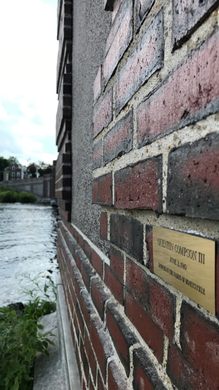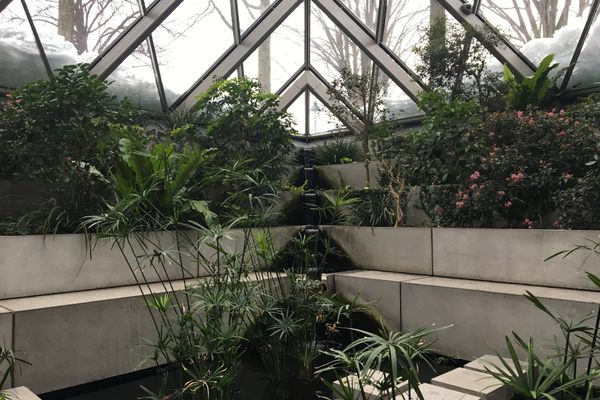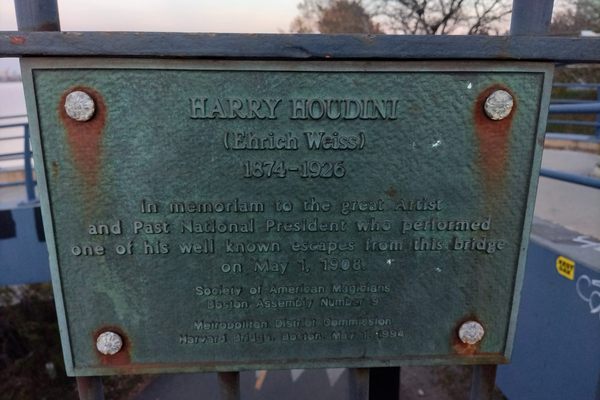Quentin Compson Memorial
A real plaque marks the spot where a Faulknerian character committed fictional suicide.
Anderson Memorial Bridge sits on the site of the first bridge to cross the Charles River, and carries a road that runs from Boston’s Allston neighborhood directly into Harvard Square. In the midst of the bridge sits a plaque — roughly the size of a calling card and integrated seamlessly into the structure’s brickwork — that marks the place where a literary character decided that death was preferable to being a Harvard student.
A central character in William Faulkner’s The Sound and the Fury and Absolom, Absolom!, Quentin Compson was the tragic scion of a doomed Southern family. A Hamlet-like figure, wracked by crippling introspection and unforgiving emotional analysis, he finds himself alienated at Harvard and unable to reconcile that fact with the unraveling of his once-aristocratic family. Trapped between the unwelcoming world of New England academia and the dark, fallen gentility of his Mississippi home, he walks out to the middle of the Anderson Memorial Bridge and, with flatirons tied around his ankles, chucks himself into the unforgiving Northern waters below.
The first plaque commemorating the suicide of Quentin Compson was discovered the 1960s and remained a word-of-mouth destination among the Harvard community for two decades. Placed there by a Divinity School student and a graduate physics student in June 1965, it read “Quentin Compson III. June 2, 1910. Drowned in the fading of honeysuckle.” This is a reference to an observation by Quentin that at Harvard “there were vines and creepers where at home there would be honeysuckle.”
The original plaque disappeared in 1983 while work was being done to refurbish the bridge. A replacement plaque was installed in short order by an as-yet unknown party; this replacement plaque reads:
QUENTIN COMPSONDrowned in the odour of honeysuckle.1891-1910
Know Before You Go
Because it's the size and shape of a brick, it can be a little hard to spot — it's a gold plaque on the eastern side, facing the boathouse, about 18 inches from the ground.


















Follow us on Twitter to get the latest on the world's hidden wonders.
Like us on Facebook to get the latest on the world's hidden wonders.
Follow us on Twitter Like us on Facebook